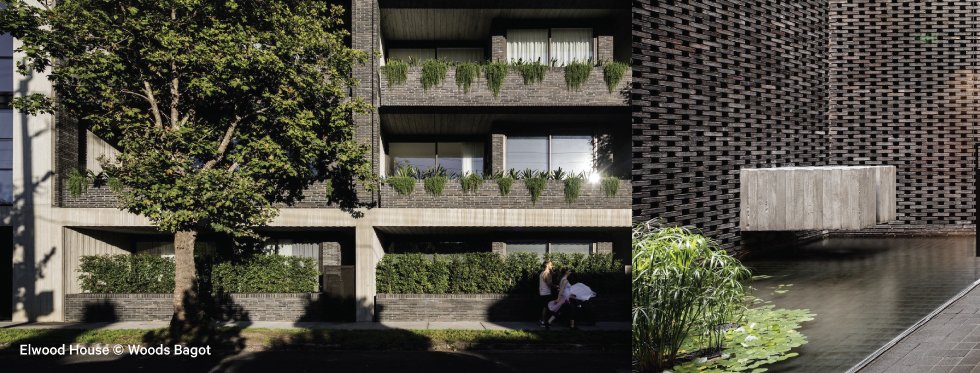
The government has announced changes to the planning rules for apartment developments, with a focus on the relationship between new apartment developments and the amenity of existing neighbourhoods.
A discussion paper has been prepared which outlines some potential changes and explores five policy aims for new apartment developments, including the need for green space, high quality building facades, protection from wind impacts, attractive, engaging streets and better managed construction impacts.
At The Knight we welcome these proposed changes. Better apartment buildings in our neighbourhoods will not only improve the attractiveness and safety of our streets, but also play a integral role in improving the mental health and wellbeing of Strata residents and encourage a sense of community within buildings.
Read more about The Knight’s work building community here.
With recent trends showing that more and more families are ditching wide open spaces and opting for apartment living, there’s never been a better time to ensure that the apartments of the future meet the needs of the Modern Australian.
We’ve outlined some of the key points raised in the discussion paper below and provided our unique perspective on how developments can encourage harmonious, efficient and economical Owners Corporations for the benefit of all residents in a building.
1. Green Space.
Landscaping standards.
The presence of nature has numerous positive impacts, providing fresh air and shade during the warmer months, and acting as a mood boost when stressed. More buildings are including greenery as consumers continue to demand it, but care needs to be taken in selecting what type is present to protect the building, and residents, into the future.
Better apartments would prioritise native flora to ensure it can stand the climate – as our cities continue to get warmer, more water and maintenance will be required for non-native plants to thrive. This is both unsustainable and expensive and could place financial strain on an Owners Corporation.
Important to consider also is how the landscaping will mature – root mesh and PVC piping should be used at the outset to prevent the entry of tree roots into sewers and drains and avoid any nasty repair bills in the future.
Communal Open Space standards.
As we shift away from standalone dwellings with backyards, the communal spaces provided in apartment complexes become crucial. While it may seem simple to factor this into the equation, what many developers overlook is the ongoing costs and requirements of upkeep placed upon the Owners Corporation.
To ensure a successful and harmonious building into the future, these spaces should not only be accessible to all residents and easily managed but consider noise and privacy impacts to the closest Lots.
2. Appearance of the building.
While it is important that the exterior of buildings look attractive and provide interest to the streetscape, more important is the safety of residents and the longevity of the materials used.
Currently, outside of central Melbourne there are few planning provisions to ensure high-quality facades. This is resulting in buildings which do not age well, or may not adequately allow for maintenance, resulting in headaches and increased costs for the Owners Corporation.
Proposed changes for better apartments include ensuring that all materials used are durable for the life of the building, and that features designed to increase interest and attractiveness are simple and cost-effective to maintain.
The added benefits of these changes will be Owners and Residents feeling an increased sense of pride in their building. This will help reduce tenant turn over, and encourage a better sense of community among occupants, in turn increasing the appeal and safety of the building.
3. Wind impacts.
In most of Vitoria there are no specific planning requirements to manage wind effects. Tall buildings can cause exaggerated wind gusts, affecting pedestrians and the safety of public, private and communal spaces.
Where this is occurring, the negative impacts affect not only residents, but the wider community. Owners in these buildings may be less likely to remain Occupiers, and tenant turnover may be increased, resulting in a myriad of concerns around access and security for the Owners Corporation. Furthermore, streets directly surrounding the building are more likely to be vacant, minimising the potential for organic social interaction.
The proposed changes include defining comfortable and unsafe wind conditions and ensuring the wind effects are considered early in the design process, avoiding costly redesigns or poor design outcomes which will affect Owners down the track.

4. Street Interface.
A new apartment complex can drastically change the outlook of a street. For existing residents, an unattractive development can hinder their enjoyment of their home and for potential residents it could deter their interest in moving into the area. Building better apartments ensures the satisfaction of all residents, current and future.
Currently, windowless and blank walls, prominent vehicle entries and visible car parking which dominate the street frontage can detract from the appearance of the street and cause reduced safety for pedestrians.
Proposed changes to integrate apartment developments with the street and reduce the occurrence of the above issues will not only improve the look of the street, but help increase safety and encourage active streets, enabling communities to flourish.
5. Construction Impacts.
As our neighbourhoods continue to grow construction is an unavoidable occurrence, necessary to support our communities into the future. Unfortunately, the construction phase of new developments can cause disturbance and stress to neighbours and can be a lengthy process.
New standards have been proposed to require consideration of how a site will be managed prior to and during the construction period, working towards a construction phase that places the least strain on neighbours and the immediate community.
Minimising construction impacts will help new apartments and their residents be welcomed into the neighbourhood – encouraging not just building-based relationships, but a broader sense of community and all the benefits this can bring.
You can find out more information, and read the discussion paper in full, here. Submissions close on Friday 27 September at 5:00pm, so be sure to have your say and help shape our future neighbourhoods.

